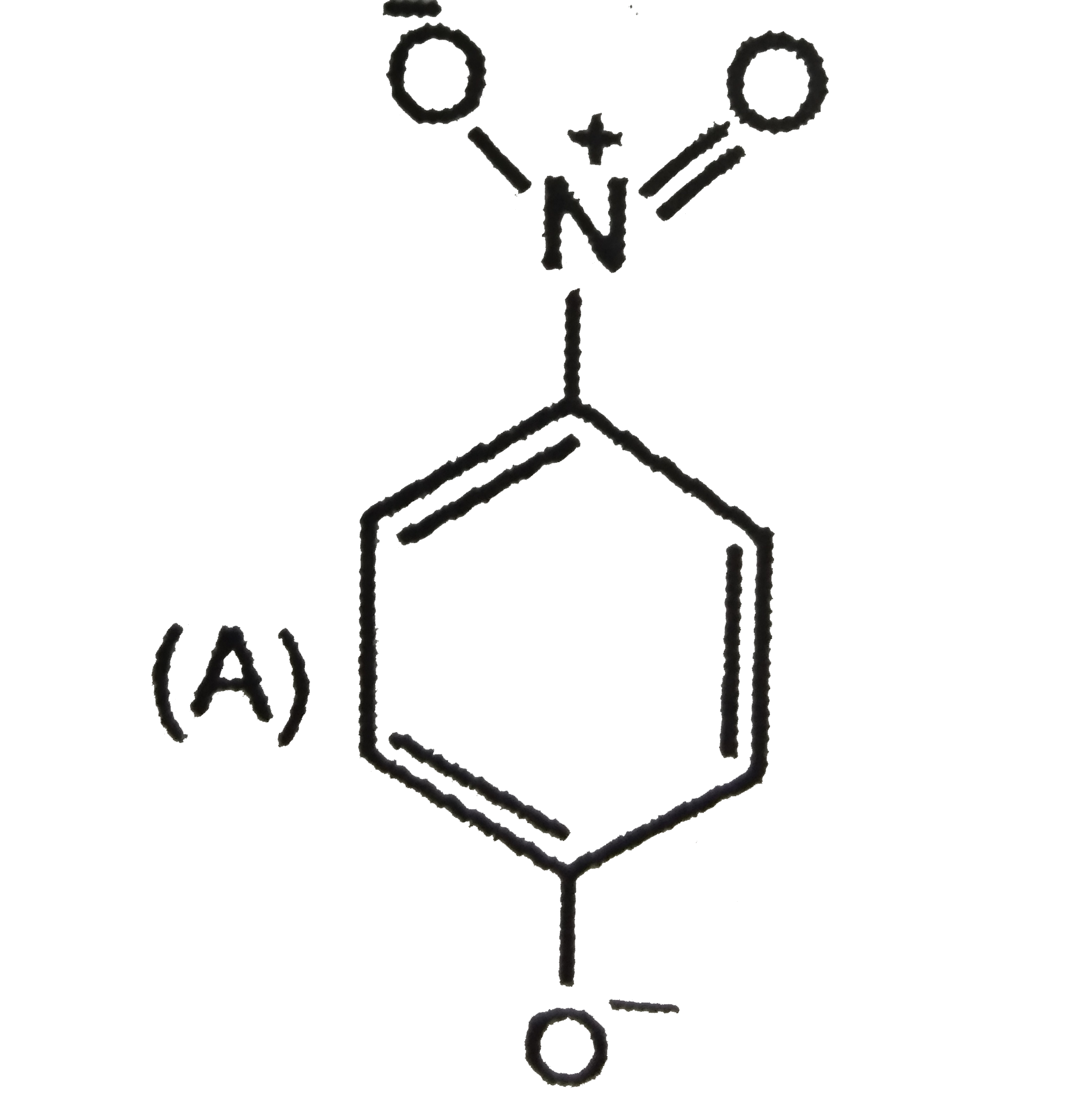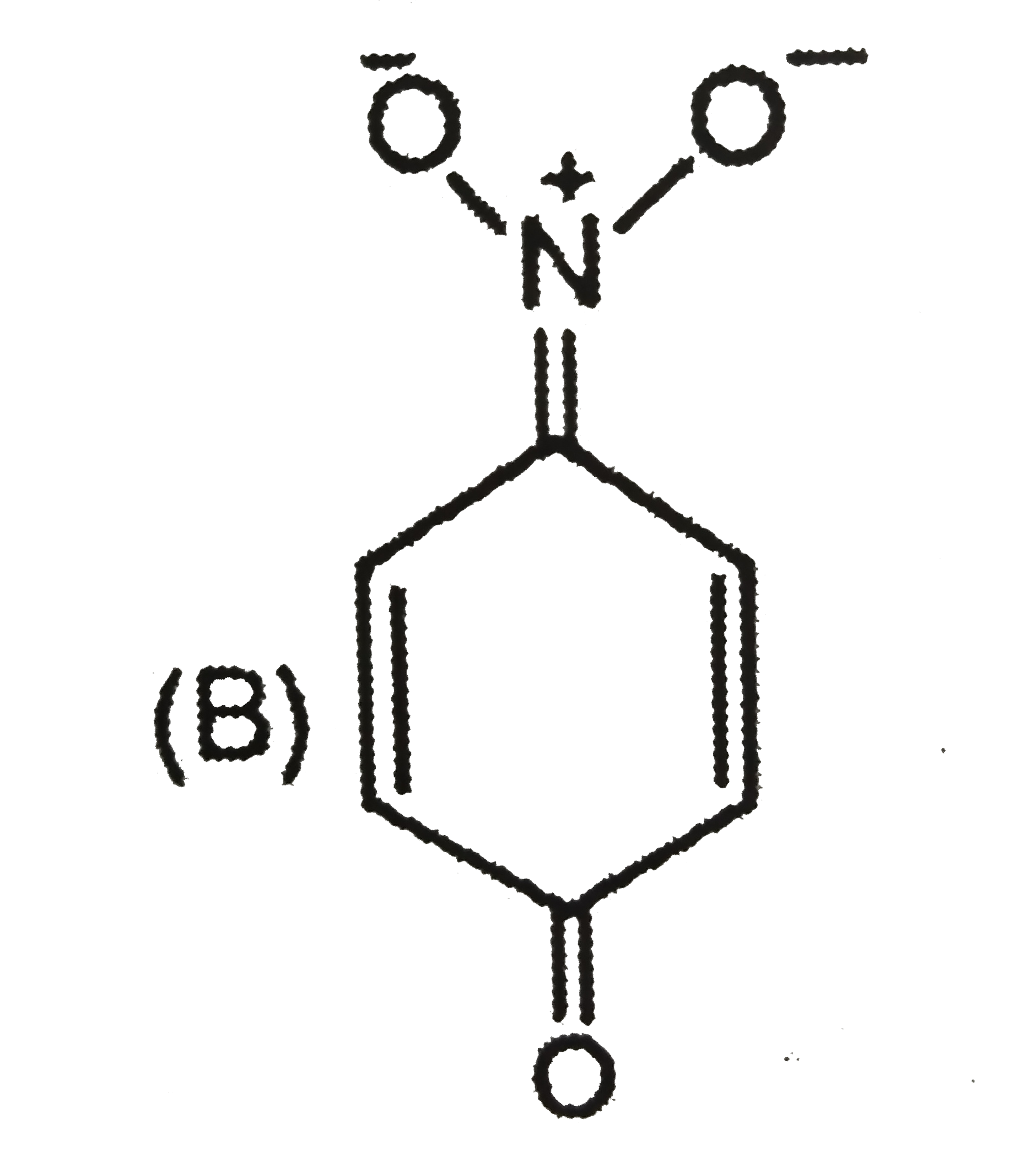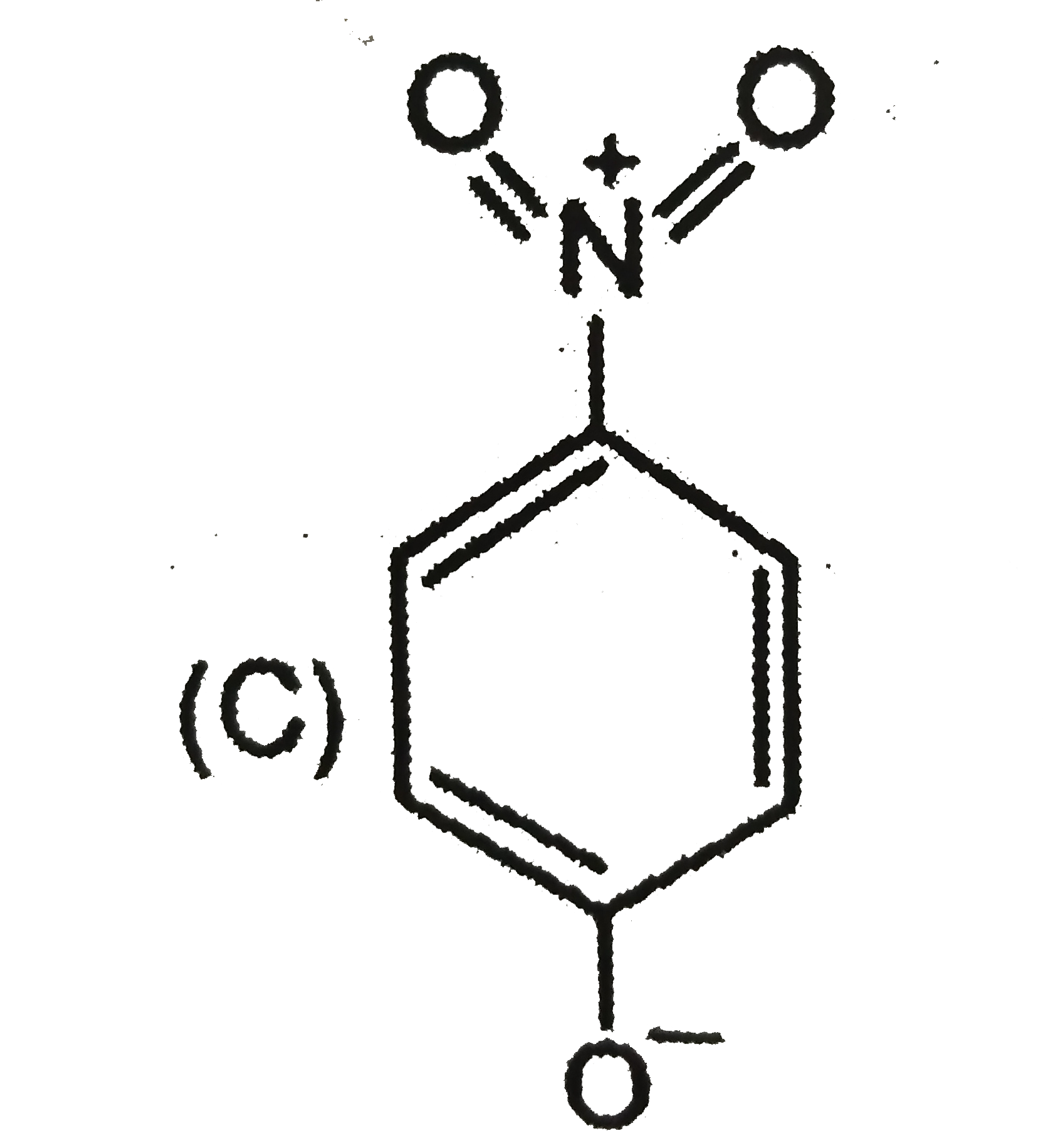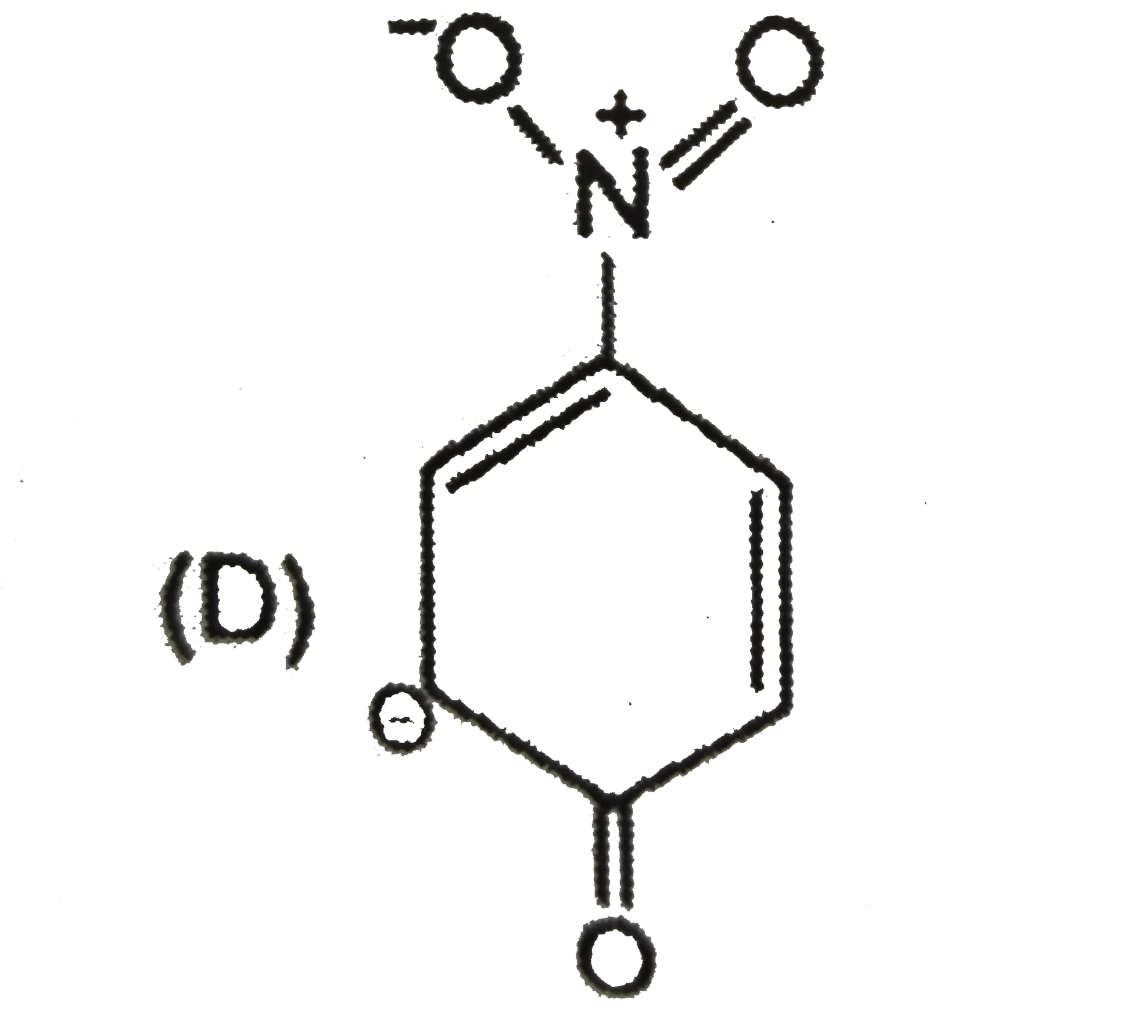The most unlikely representation of resonance structures of p-nitrophenoxide ion is :




The correct Answer is:C
To determine the most unlikely representation of resonance structures of the p-nitrophenoxide ion, we need to analyze the possible resonance structures and identify which one does not conform to the rules of resonance.
1. Identify the Structure of p-Nitrophenoxide Ion:
- The p-nitrophenoxide ion consists of a phenolic ring with a nitro group (-NO2) at the para position and a negatively charged oxygen (phenoxide ion).
- The basic structure can be represented as follows:
O−∣C6H4−NO2
2. Understand Resonance Structures:
- Resonance structures are different ways of drawing the same molecule where only the positions of electrons differ, not the positions of the atoms.
- In p-nitrophenoxide, the negative charge on the oxygen can be delocalized through resonance.
3. Draw Possible Resonance Structures:
- Structure 1: The negative charge on the oxygen remains, and the double bond between the oxygen and carbon shifts to the ortho position.
- Structure 2: The negative charge moves to the ortho position, creating a double bond between the oxygen and the carbon.
- Structure 3: The nitro group can also participate in resonance, where the nitrogen can have a positive charge and the double bonds can shift accordingly.
4. Evaluate Each Structure:
- Structure A: This structure has a positive charge on the nitrogen and maintains the correct number of bonds. This is a valid resonance structure.
- Structure B: This structure shows multiple double bonds involving nitrogen, which is not possible since nitrogen can only form a maximum of four bonds. This structure is unlikely.
- Structure C: This structure has the negative charge on the ortho position, which is possible due to resonance.
- Structure D: This structure shows a single bond with a negative charge on oxygen, which is also valid.
5. Identify the Most Unlikely Representation:
- After evaluating the resonance structures, Structure B is the most unlikely representation because it violates the octet rule for nitrogen by having five bonds.
Conclusion:
The most unlikely representation of resonance structures of p-nitrophenoxide ion is Structure B.
- The p-nitrophenoxide ion consists of a phenolic ring with a nitro group (-NO2) at the para position and a negatively charged oxygen (phenoxide ion).
- The basic structure can be represented as follows:
O−∣C6H4−NO2
- Resonance structures are different ways of drawing the same molecule where only the positions of electrons differ, not the positions of the atoms.
- In p-nitrophenoxide, the negative charge on the oxygen can be delocalized through resonance.
- Structure 1: The negative charge on the oxygen remains, and the double bond between the oxygen and carbon shifts to the ortho position.
- Structure 2: The negative charge moves to the ortho position, creating a double bond between the oxygen and the carbon.
- Structure 3: The nitro group can also participate in resonance, where the nitrogen can have a positive charge and the double bonds can shift accordingly.
- Structure A: This structure has a positive charge on the nitrogen and maintains the correct number of bonds. This is a valid resonance structure.
- Structure B: This structure shows multiple double bonds involving nitrogen, which is not possible since nitrogen can only form a maximum of four bonds. This structure is unlikely.
- Structure C: This structure has the negative charge on the ortho position, which is possible due to resonance.
- Structure D: This structure shows a single bond with a negative charge on oxygen, which is also valid.
- After evaluating the resonance structures, Structure B is the most unlikely representation because it violates the octet rule for nitrogen by having five bonds.
The most unlikely representation of resonance structures of p-nitrophenoxide ion is Structure B.
Topper's Solved these Questions
- GENERAL ORGANIC CHEMISTRY-IBOOK - RESONANCE ENGLISHCHAPTER - GENERAL ORGANIC CHEMISTRY-IEXERCISE - EXERCISE-2 PART-II SINGLE AND DOUBLE VALUE INTEGER TYPE
11 Videos
- GENERAL ORGANIC CHEMISTRY-IBOOK - RESONANCE ENGLISHCHAPTER - GENERAL ORGANIC CHEMISTRY-IEXERCISE - EXERCISE-2 PART-III : ONE OR MORE THAN ONE OPTIONS CORRECT TYPE
9 Videos
- GENERAL ORGANIC CHEMISTRY-IBOOK - RESONANCE ENGLISHCHAPTER - GENERAL ORGANIC CHEMISTRY-IEXERCISE - EXERCISE-1 PART-III (MATCH THE COLUMN)
1 Videos
- GENERAL ORGANIC CHEMISTRY IIBOOK - RESONANCE ENGLISHCHAPTER - GENERAL ORGANIC CHEMISTRY IIEXERCISE - Part-III: Section-5: Matching List Type
1 Videos
- HYDROGEN AND ITS COMPOUNDSBOOK - RESONANCE ENGLISHCHAPTER - HYDROGEN AND ITS COMPOUNDSEXERCISE - INORGANIC CHEMISTRY(Hydrogen & its compunds Y environment chemistry)
33 Videos
Similar Questions
Knowledge Check
The most unlikely representation of resonance structure of p-nitrophenoxide is :
A B
B C
C D
D
The most stable resonating structure of p-nitrosobenzene is :
A B
B C
C D
D
Draw the resonating structures of

View SolutionThe number of resonance structures for N is

View SolutionLeast contributing resonating structure of nitroethene is :
View SolutionResonance structures can be written for .
View SolutionThe number of resonance structures for Anthracene are

View SolutionResonance structures can be written for .
View Solution
